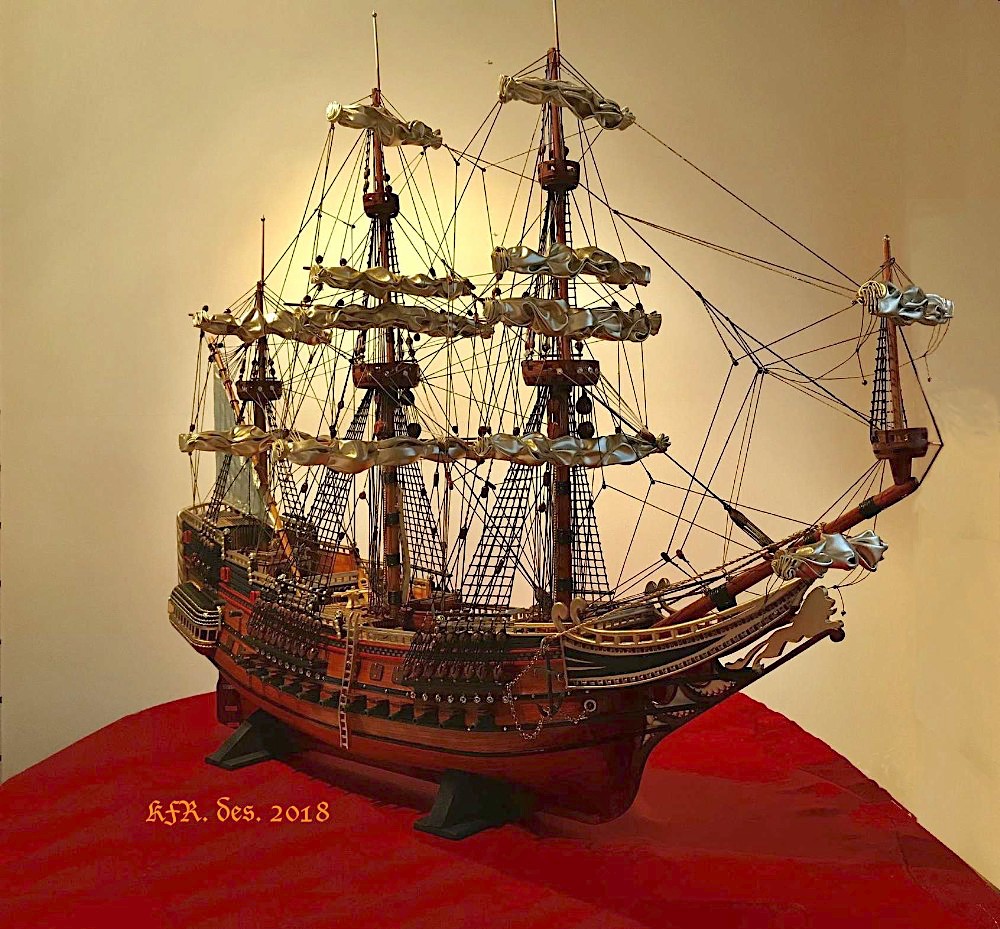The Stranding of Het Wapen Van Amsterdam in 1667

The giant remembers well when that fine ship ran aground here on the sands not far from Lómagnúpur mountain on the 19th of Sept.1667. The vessel was coming from the island of Java laden with gold, pearls, diamonds, silver, copper, silk, spices and other precious items. The vessel was recently built and one of the finest in the Dutch fleet. Caught in a fierce storm the ship ran aground while other vessels in the convoy were blown off course in the raging Atlantic Ocean. It´s said that one ship even smashed to pieces on the coast of the Faroe Islands.
Much has been written and talked about concerning the ship´s precious cargo, but far less about the fact that it was very likely the worst maritime disaster in Iceland´s history in terms of loss of life. It´s said that at least 140 drowned, with 50 to 60 managing to survive and tell the tale of what happened and what cargo was on board. Many of those who managed to make it ashore died of exposure on as they desperately tried to cross the freezing wet sands and glacial rivers.
The crew hastily took with them what they could carry, which included a large quantity of silk. The story goes that many locals for years to come slept in bedlinen of the finest silk. The silk was bartered in return for horses the Dutch survivors needed to get to Reykjavik where they could board a ship to take them back to Holland.
The ship´s wreck was abandoned and with time sank deeper and deeper into the sand. Within a hundred years even its tall masts had disappeared from sight. Around 1960 some Icelandic entrepreneurs began searching for the lost wreck. Suddenly the place was a hive of activity. They brought in all sorts of equipment. For example to traverse the sands and glacial rivers they had an amphibian named Sea Dragon.
The search and exploratory digging went on for years. Finally in 1983 the salvage team were convinced they had located the wreck. The Dutch government sent over observers to the site as they still laid claim to the ship and its cargo. One could feel the suspense in Sept. 1983 as the team dug ever deeper down to the wreck. But what eventually came to light was not the Het Wapen van Amsterdam but the wreck of the German trawler Freidrich Albert that had run aground in 1903. The sense of disappointment was overwhelming and the project was abandoned. So somewhere out on the sands a Dutch merchant vessel and its gold is still waiting to be found.
On the web Eldsveitir.is
you can read more about this Strand and search for the gold in the sand.
Stories written by Lilja Magnúsdóttir Translation and narration by Neil McMahon (Karl Friðrik Ragnarsson í Vík í Mýrdal made an imitation of the gold ship and took the photo)